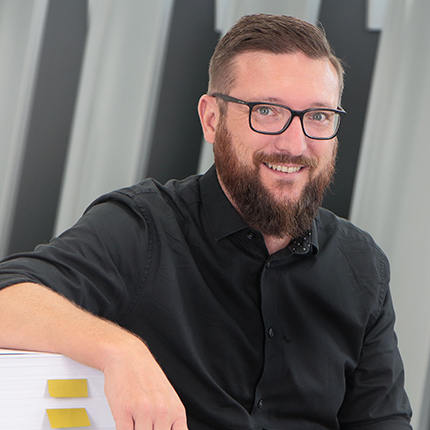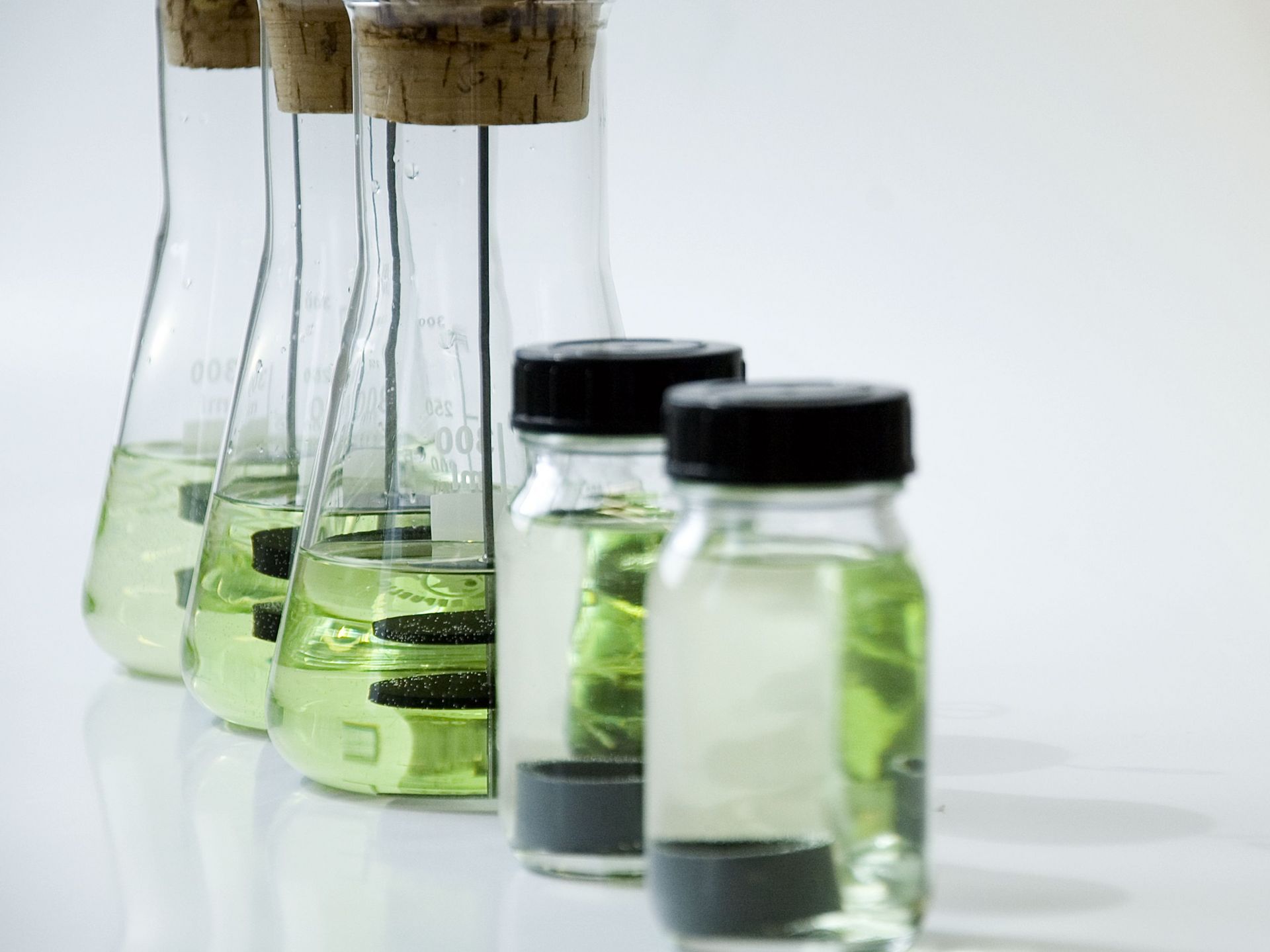Topic of your interest
AIE-active photosensitisers for monitoring and minimising microbial contamination in the fountain solution cycle
Short name: AIE-active Photosensitisers
Fogra no. 32.177
Project leader: Dr P. Stolper
Partner: wfk – Cleaning Technology Institute e.V., Krefeld
Funding: BMWK (IGF) via DLR
Timescale: 01.02.2023 - 31.01.2024
The fountain solution circuits of offset presses require regular cleaning and maintenance to prevent the formation of biofilms. This effort results in high financial costs for printers. Contamination of fountain solution circuits is becoming increasingly critical due to the reduced use of isopropanol. The reduction is compounded by the new classification of conventional biocides as hazardous substances by the ECHA (European Chemicals Agency). As a result, fountain solution additives now contain only small amounts of such substances.
These circumstances make it necessary to find new solutions to the problem of microbial contamination. For this reason, new substances, namely aggregation-induced emission (AIE) photosensitisers, are being used in fountain solutions as part of this research project. These should enable monitoring microbial contamination and offer the possibility of killing the micro-organisms.
Solution steps
The following steps are necessary to achieve the targeted results of the research project:
Determination of relevant microbiological contamination
Development of AIE active Photosensitisers
Development of a process for photodynamic inactivation
Development of a monitoring system
Examination of the influence of Fountain solution components
Material compatibility tests using founts with activated AIEs
Print trials at Fogra and in some print plants
Targeted results
This research project aims to develop a method for monitoring and minimising microbial contamination in the fountain solution circuit. This method is based on specially developed AIE (Aggregation Induced Emission) active photosensitisers. They fluoresce by energy transfer and emit absorbed energy to surrounding molecules when their molecular mobility (e.g. when embedded in bacteria) is photochemically stimulated (e.g. by irradiation with Vis light). This transfer to surrounding molecules leads to highly reactive oxygen species (ROS) and singlet oxygen formation. AIE-active photosensitisers are added at low concentrations (e.g., as part of the fountain solution concentrate) to monitor and deactivate microbial contamination in the fountain solution.
They are embedded in the bacteria in place and restrict their molecular mobility there. By continuously measuring the fluorescence, specially developed algorithms can be used to monitor whether microbial contamination has occurred or whether a threshold value has been exceeded. The fountain solution circuit is treated with light of a suitable wavelength (e.g., Vis LED arrays inserted into the circuit) to decontaminate as required. By stimulating the AIE-active photosensitisers present in the microorganisms, a reactive species is formed that oxidatively inactivates them (photodynamic inactivation). Successful decontamination can be demonstrated by fluorescence measurements (disappearance of the fluorescence signal).



